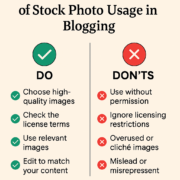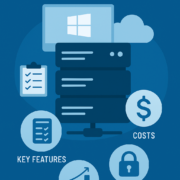An Overview of Geofencing in Digital Marketing
In the evolving landscape of digital marketing, geofencing has emerged as a powerful tool that allows businesses to target audiences with precision. By leveraging location-based technology, advertisers can deliver personalized messages to consumers within a specific geographic area. This article provides an in-depth overview of geofencing in digital marketing, exploring its benefits, applications, and best practices.
What is Geofencing?
Geofencing is a location-based service that uses GPS, RFID, Wi-Fi, or cellular data to define virtual boundaries around a specific geographic area. When a user’s mobile device enters or exits this predefined area, it triggers a response, such as a push notification, text message, or targeted advertisement.
How Geofencing Works
- Creating a Geofence: A geofence is created by drawing a virtual boundary around a location, such as a store, event venue, or city. This boundary can be as small as a single building or as large as an entire city.
- Tracking Devices: The technology monitors mobile devices within the geofence using GPS, Wi-Fi, or cellular networks.
- Triggering Actions: When a device enters or exits the geofence, an action is triggered. This could be an ad served through an app, a push notification, or even a special offer delivered via text message.
Applications of Geofencing in Digital Marketing
Geofencing is widely used across various industries to enhance marketing efforts. Below are some key applications:
1. Retail Marketing
Retailers use geofencing to attract customers to their stores by sending personalized offers when they are near a physical location. For example, a clothing store may send a discount coupon to a customer who is within a mile of the store.
2. Event Marketing
Event organizers can use geofencing to engage attendees during conferences, concerts, or sports events. By creating a geofence around the event venue, organizers can send real-time updates, promotions, or reminders to attendees.
3. Connected TV and OTT Advertising
In connected TV (CTV) and OTT (over-the-top) advertising, geofencing allows advertisers to target specific regions with tailored video content. This ensures that ads are relevant to the audience’s location, enhancing the effectiveness of the campaign.
4. Competitive Targeting
Businesses can set up geofences around their competitors’ locations to attract their customers. For instance, a restaurant may send a special offer to users who are near a rival eatery, enticing them to visit their establishment instead.
5. Performance Marketing and Demand Generation
Geofencing can be a crucial tool in performance marketing and demand generation by delivering timely and relevant ads to consumers who are most likely to convert. This strategy helps in driving foot traffic, increasing sales, and generating high-quality leads.
Benefits of Geofencing in Digital Marketing
Geofencing offers several advantages that make it a valuable component of digital marketing strategies:
1. Enhanced Targeting
Geofencing enables marketers to target consumers based on their location, leading to more personalized and relevant messaging. This precise targeting can result in higher engagement rates and improved return on investment (ROI).
2. Increased Customer Engagement
By delivering real-time, location-specific content, geofencing can significantly boost customer engagement. Consumers are more likely to respond to offers and promotions that are relevant to their immediate surroundings.
3. Cost-Effective Advertising
Geofencing allows businesses to focus their advertising efforts on specific geographic areas, reducing the need for broad, untargeted campaigns. This targeted approach can lead to more efficient use of advertising budgets.
4. Improved Conversion Rates
Targeted messaging delivered through geofencing often leads to higher conversion rates. When consumers receive personalized offers at the right time and place, they are more likely to take action, whether that means visiting a store, making a purchase, or signing up for a service.
Best Practices for Implementing Geofencing in Marketing
To maximize the effectiveness of geofencing in digital marketing, consider the following best practices:
1. Define Clear Objectives
Before implementing geofencing, it’s essential to define clear objectives. Whether the goal is to increase foot traffic, boost sales, or enhance brand awareness, having a well-defined purpose will guide the strategy and ensure measurable results.
2. Choose the Right Locations
Selecting the right locations for geofencing is crucial. Consider areas where your target audience is likely to be, such as near your business locations, competitors’ stores, or popular events.
3. Personalize Your Messaging
Personalization is key to successful geofencing campaigns. Tailor your messages to the specific needs and preferences of your audience, and ensure that the content is relevant to their location and context.
4. Monitor and Optimize Campaigns
Regularly monitor the performance of your geofencing campaigns and make adjustments as needed. Analyzing data on user engagement, conversion rates, and ROI can help you refine your strategy and achieve better results.
5. Respect Privacy and Compliance
When using geofencing, it’s essential to respect user privacy and comply with relevant regulations, such as the General Data Protection Regulation (GDPR). Ensure that users have given their consent to receive location-based messaging and that their data is handled securely.
Challenges and Considerations
While geofencing offers many benefits, there are also challenges and considerations to keep in mind:
1. Privacy Concerns
Geofencing relies on location data, which can raise privacy concerns among consumers. Marketers must be transparent about how they collect and use this data and ensure that they have obtained the necessary permissions.
2. Battery Drain
Continuous use of location tracking can drain a user’s mobile device battery, leading to potential dissatisfaction. Marketers should be mindful of the frequency and timing of geofencing triggers to minimize battery consumption.
3. Accuracy of Location Data
The accuracy of geofencing depends on the quality of location data. Factors such as poor GPS signals, network issues, or inaccurate location tracking can affect the effectiveness of geofencing campaigns.
Future Trends in Geofencing
As technology continues to advance, geofencing is likely to evolve, offering even more sophisticated targeting capabilities. Some emerging trends include:
1. Integration with AI and Machine Learning
The integration of artificial intelligence (AI) and machine learning with geofencing can enable more precise targeting and predictive analytics. These technologies can help marketers anticipate consumer behavior and deliver even more personalized content.
2. Expansion into Connected Devices
Geofencing is expected to expand beyond smartphones to include other connected devices, such as smartwatches, connected cars, and smart home systems. This expansion will create new opportunities for location-based marketing.
3. Cross-Channel Marketing
Future geofencing strategies may involve cross-channel marketing, where geofencing data is used to inform campaigns across multiple channels, including social media, email, and connected TV advertising. This integrated approach can provide a more cohesive and impactful user experience.
Conclusion
Geofencing has become an indispensable tool in digital marketing, offering businesses the ability to reach consumers with highly targeted and relevant content. By leveraging location-based technology, marketers can enhance engagement, increase conversions, and achieve better ROI. As the technology continues to evolve, geofencing will undoubtedly play an even more significant role in shaping the future of digital advertising.




